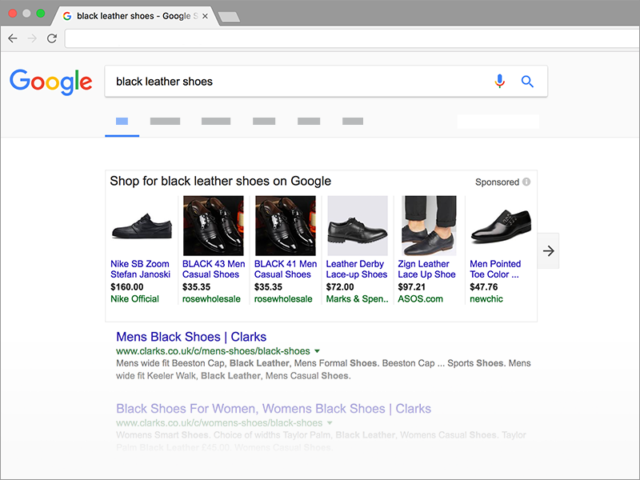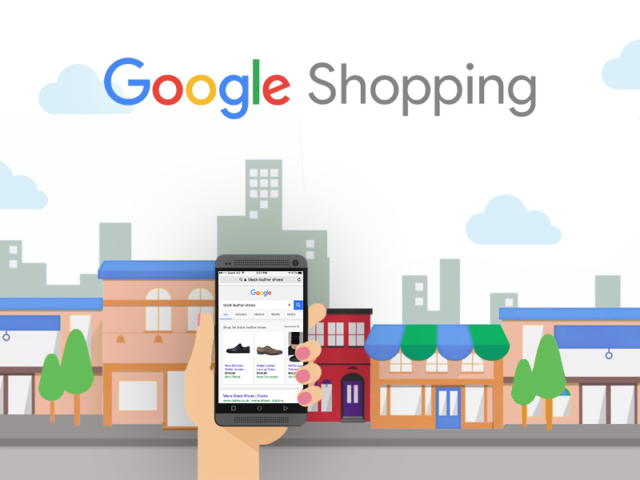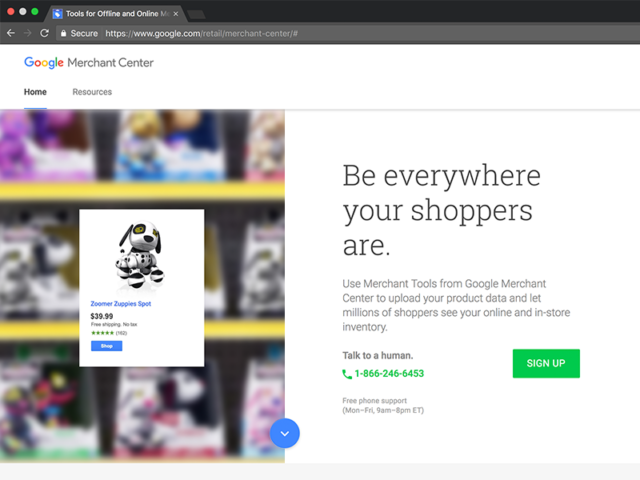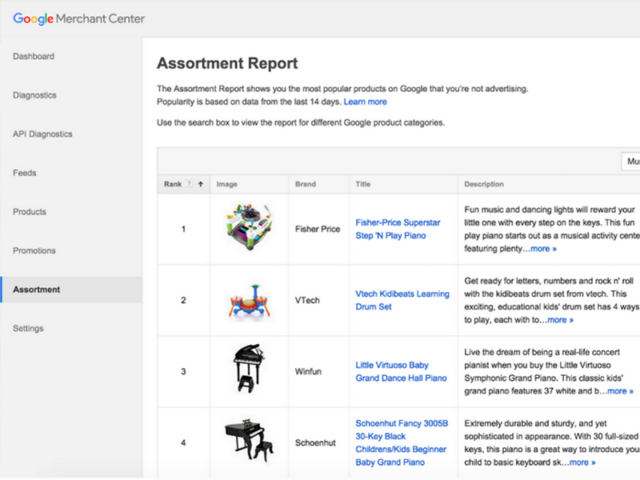Updated: Jul 18, 2020
Author: Tony Waldegrave

Google Shopping ads show at the top of a Google Search results page whenever searching for a tangible product that is sold online (e.g. "black leather shoes").
The shopping ads consist of an image, a product title, a price and a brand or website name/URL. Google Shopping ads give people the opportunity to visually compare products before even clicking through to any websites.
Google introduced this advertising feature in Google NZ at the being of 2017.
Google Shopping campaigns are set up in the Google Merchant Centre platform. As a result of the 2013 upgrade, building a Google Shopping campaign is now much faster, and provides deeper analytics.
Absolutely! Google Shopping ads feature a product image and a price, so they stand out from the rest of search results. Google has reported that many businesses discover the click through rates of Google Shopping ads are often 200% to 300% higher than normal text ads. As we will discuss soon, the true success of Google Shopping campaigns largely depends on your website.

Without a doubt, all product-based businesses with ecommerce websites should take advantage of the opportunities of Google Shopping. A significant portion of businesses experience better returns with Google Shopping than with any other ecommerce advertising. However, much like Google AdWords advertising, Google Shopping campaigns use a complex platform which requires an expert to properly set up and manage. If done right, Google Shopping can be a gold mine. If you haven't got AdWords set up already, we definitely recommend checking out our Google AdWords services page.
Like we said earlier, Google Shopping campaigns are set up in the Google Merchant Centre platform. However, you can view your products, manage your bidding, and address certain errors and opportunities for improvement within Google AdWords. Within Google AdWords, you can also view industry benchmarks to help you understand how you are performing compared with other businesses similar to you (including average click-through-rates, your impression shares, average CPC bids and more).
To ensure you are eligible to run Google Shopping ads to your website, do the following:

Google Shopping works very similar to Google AdWords, with the exception of how keywords and bidding rules are used. Normal AdWords text ads are targeted using keywords. In Google Shopping, Google automatically targets your products to all relevant searches. To tighten you targeting, you can organise your products into more specific Product Groups. Bids are set at the Product Group level.
When you create a product, you tell Google about your product by giving it Attributes. Product Attributes include a unique Item-ID, a Brand, a product Category (e.g. ‘Apparel & Accessories > Clothing > Dresses’), a Product Type, Custom Labels, product Condition, a distribution/sales Channel, and Channel Exclusivity. So what are these? Product Type is obviously very similar to product Category. However, product categories are predefined by Google, whereas you can custom-set a Product Type if no product Category as able to closely define your product (e.g. ‘Apparel & Accessories > Clothing > Dresses > Maxi Dresses’). Placing Product Groups inside Ad Groups allows you to set negative keywords (to tighten your targeting even more).
For more information, please contact the friendly pros at Adhesion.
Right off the bat, your website needs to be optimised for ecommerce. About two thirds of people who purchase a product via a Google Shopping ad buy a different product from the one they clicked. This is why it is important to feature other similar or popular products on each landing page (maybe try a slider at beneath each product and see the difference it makes).

Next is pricing. It's important to test the price elasticity of your products. For some products, setting your price to $1 less than the prices in your competitors' ads can make a huge difference. For others products whose design/look influences consumers' decisions, a higher price won't impede your click through rates and may also suggest that your product is premium. Either way, it is of paramount importance that the prices in your ads match the prices on your landing pages (otherwise Google can suspend your account, really).
MarketingLand.com published an article which suggests that, when setting product Titles, it is better to overpopulate product Titles with keywords rather than underpopulate product Titles with keywords. Also, remember to keep your product Titles to 50 characters (including spaces) or less, otherwise they may be cut short in Google Search.
Arguably more important than a product's Title, is its image. Humans are very visual creatures and a high quality, accurate photo will likely give people more information than a product's Title and Description. Product photos should not have any photoshopped logos or borders, and they should not look too different from the product images on your website. The optimal size for a product photo is about 172 pixels by 172 pixels.
Last but not least, the campaign-level structure of your Google Shopping account is very important. You should create a seperate campaign for any products whose category is significantly different to your main products (e.g. one for Dishwashers and another for Microwaves). Splitting vastly different products into multiple campaigns allows you to set Campaign Priorities. You can set different Priorities to each campaign (low, medium or high) that control your bidding preferences. The same product can exist in multiple campaigns but each campaign can have a different bidding strategy. So, for example, you can make a high Priority campaign with a rule that increases your max CPC bid by +10% only for relevant searches made by people aged 35 years or younger. If somebody older performs a search for your product, then the max CPC bid will default to that of the low Priority campaign. However, you need to be careful with placing the same product in multiple campaigns. This is because it is easy to create conflict between the two bids from each campaign’s product, effective putting the products up against each other to compete.
Contact Adhesion for more information and a quote to set up and manage your Google Shopping Ads campaign.
Our reputation goes hand-in-hand with our team’s dedication to best practice. As a registered Premier Google Partner, our team refreshes our certifications every 12 months — A tradition we started over a decade ago. To stay ahead, we are always looking forward to upcoming certifications for online advertising, website development and search engine optimisation.
Blog • Terms • Privacy • 110 Mount Eden Rd, Mount Eden, Auckland 1024 • Mon–Fri 8:30am–5pm
© 2007-2025 Adhesion